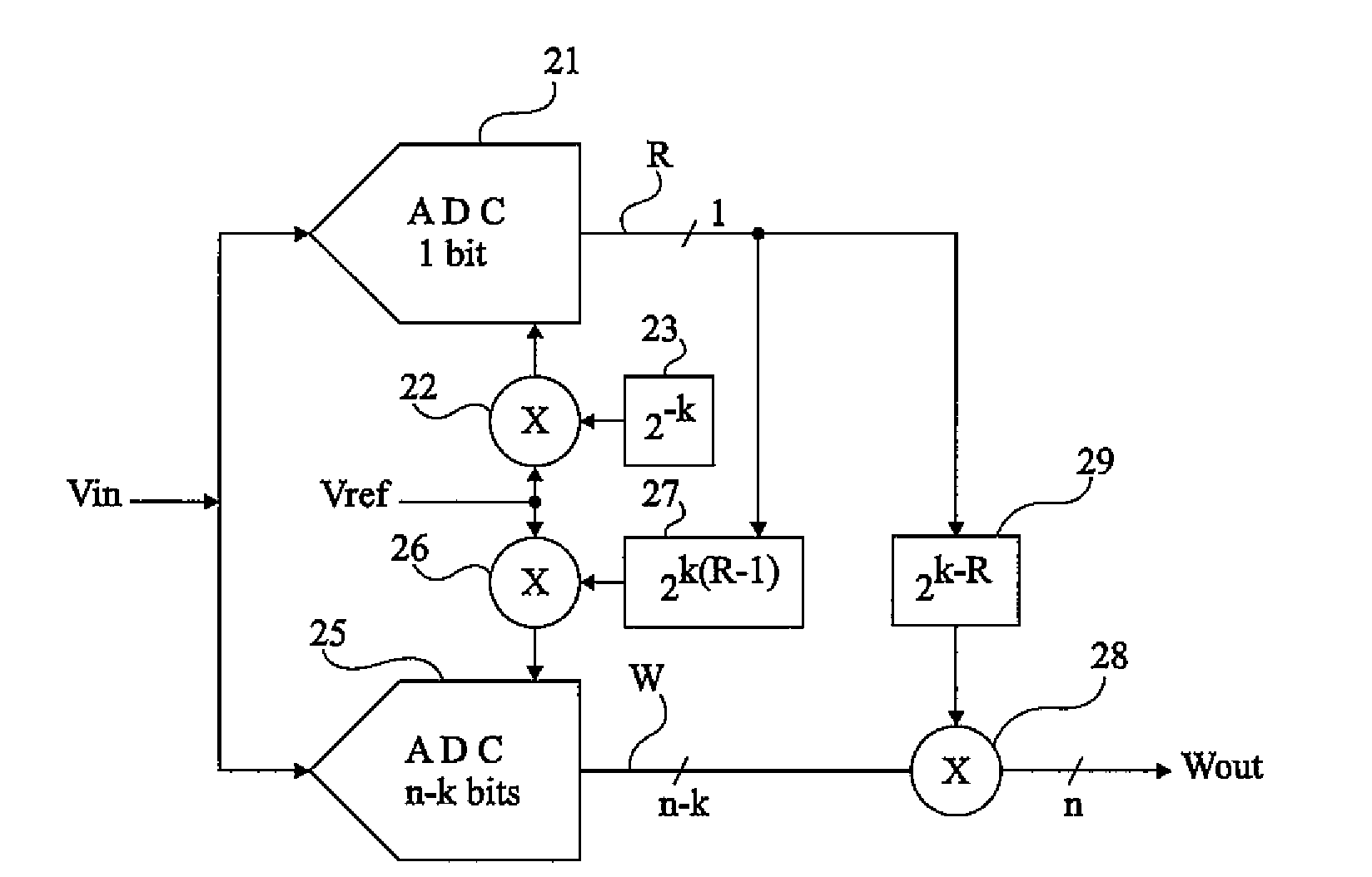Analog-to-digital converter
a converter and analog-to-digital technology, applied in the field of analog-to-digital converters, can solve the problems of variable ramp, more space the converter occupies or the longer the conversion time, and the effect of increasing the number of bits
- Summary
- Abstract
- Description
- Claims
- Application Information
AI Technical Summary
Benefits of technology
Problems solved by technology
Method used
Image
Examples
Embodiment Construction
[0035]For clarity, only those steps and elements which are useful to the understanding of the present disclosure have been shown and will be described. In particular, the mechanisms by which the analog signals are acquired, especially in an image sensor, have not been detailed, the present disclosure being compatible with any usual acquisition. Further, what use is made of the digital signals provided by the converter has not been detailed either, the present disclosure being here again compatible with any current use. The same elements have been designated with the same reference numerals in the different drawings.
[0036]The present disclosure will be more specifically described in relation with an example of application to image sensors. It however more generally applies to any analog-to-digital conversion in which similar problems are likely to arise and especially in which the noise level varies along with the amplitude of the useful signal. For example, the present disclosure al...
PUM
 Login to View More
Login to View More Abstract
Description
Claims
Application Information
 Login to View More
Login to View More - R&D
- Intellectual Property
- Life Sciences
- Materials
- Tech Scout
- Unparalleled Data Quality
- Higher Quality Content
- 60% Fewer Hallucinations
Browse by: Latest US Patents, China's latest patents, Technical Efficacy Thesaurus, Application Domain, Technology Topic, Popular Technical Reports.
© 2025 PatSnap. All rights reserved.Legal|Privacy policy|Modern Slavery Act Transparency Statement|Sitemap|About US| Contact US: help@patsnap.com



